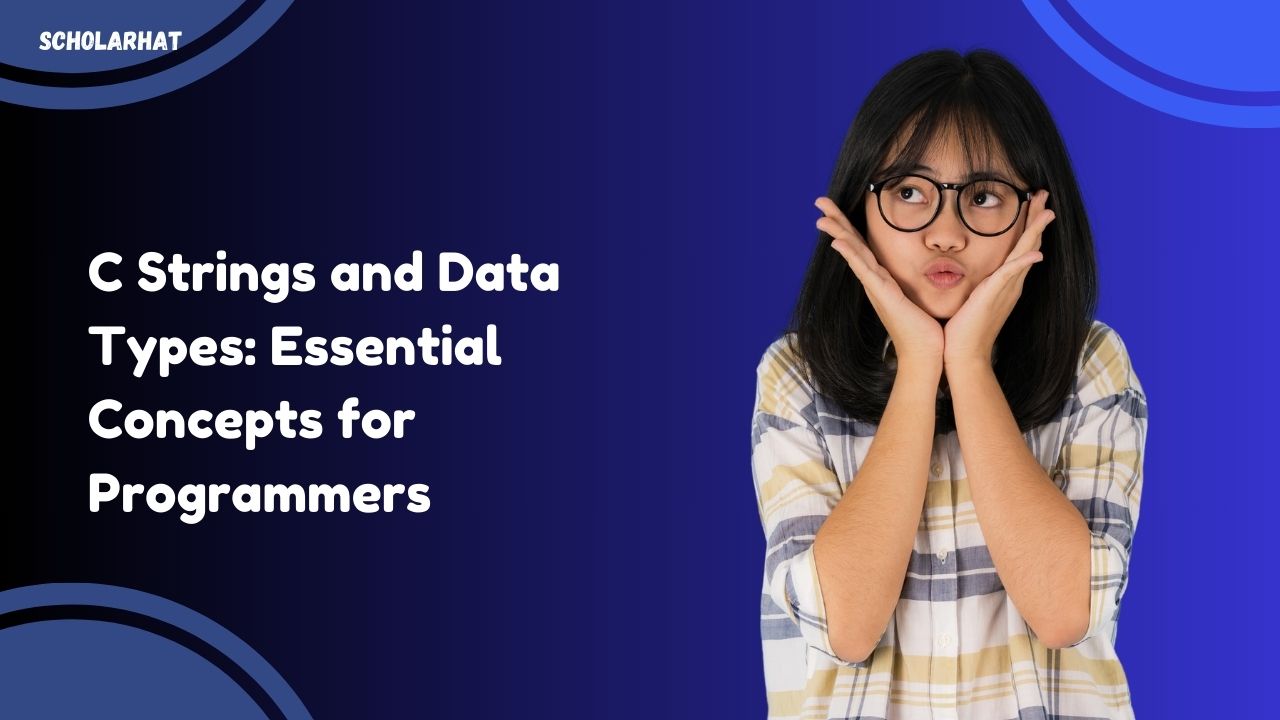In the realm of programming, understanding the fundamentals of C strings and data types is crucial for building efficient and robust applications. C, known for its efficiency and direct control over hardware, provides powerful mechanisms for handling strings and managing data types effectively. This article delves into these essential concepts, exploring how they work and their significance in programming.
C Strings
C String Basics: C strings are arrays of characters terminated by a null character (”). They serve as a fundamental data structure for handling textual data in C. For instance, declaring a string involves specifying an array of characters:
char greeting[] = “Hello, World!”;
Here, greeting is a C string containing the characters “Hello, World!” followed by a null terminator. Manipulating C strings involves various functions from the C standard library (<string.h>), such as strlen, strcpy, strcat, and strcmp, among others. These functions enable operations like string length calculation, copying, concatenation, and comparison.
Characteristics and Operations: C strings are mutable, allowing individual characters to be modified directly. However, developers must handle memory allocation and boundary conditions carefully to prevent buffer overflows, a common vulnerability in C programming.
Pointer Arithmetic and Efficiency: C strings leverage pointer arithmetic for efficient traversal and manipulation. Pointers to characters (char *) are widely used to iterate through strings and perform operations directly on memory locations, enhancing performance in tasks like parsing or tokenizing input.
Data Types in C
Primitive Data Types: C supports several primitive data types, including integers (int, short, long), floating-point numbers (float, double), characters (char), and void. Each type has specific storage sizes and ranges defined by the C standard, ensuring portability across different platforms.
User-Defined Data Types: C allows programmers to define custom data types using struct and typedef constructs. struct enables bundling different data types into a single unit, facilitating complex data representations. typedef, on the other hand, provides aliases for existing data types, enhancing code readability and maintainability.
Type Modifiers: Type modifiers like signed, unsigned, const, and volatile further refine data type behavior. For instance, signed and unsigned specify whether integers can represent negative values, while const ensures immutability of variables and volatile indicates variables whose values may change unexpectedly (e.g., hardware registers).
Practical Applications
File Handling and Input/Output: C strings and data types are pivotal in file handling and input/output operations. Functions like fopen, fprintf, fscanf, and fclose utilize C strings to manage file paths and textual data. Efficient data type handling ensures compatibility and integrity when reading from or writing to files.
Embedded Systems and Performance: In embedded systems programming, where memory and performance are critical, C’s direct control over hardware and efficient data type management shine. Compact data representations and direct memory access through pointers optimize resource utilization and execution speed, making C a preferred choice for system-level programming.
Conclusion
Mastering C strings and data types equips programmers with powerful tools for developing robust, efficient, and scalable applications. From manipulating textual data to managing memory effectively, these concepts form the foundation of C programming. Understanding their intricacies not only enhances coding skills but also fosters an appreciation for C’s role in system software, embedded systems, and high-performance computing.
In conclusion, C strings and data types are indispensable elements in a programmer’s toolkit, offering versatility, performance, and control essential for tackling diverse programming challenges.
By grasping these core concepts, developers can harness the full potential of C, creating software that meets stringent performance demands and functional requirements.

